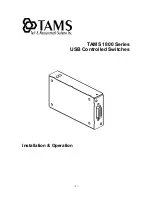
5-17
To prevent Hello packets of subrings from being looped on the primary ring, enable the primary
ring on its master node before enabling the subrings on their separate master nodes. On an
edge node or assistant-edge node, enable/disable the primary ring and subrings separately as
follows:
z
Enable the primary ring of an RRPP domain before enabling the subrings of the RRPP
domain.
z
Disable the primary ring of an RRPP domain after disabling all subrings of the RRPP
domain.
Configuring RRPP Timers
Perform this configuration on the master node of an RRPP domain.
Follow these steps to configure RRPP timers:
To do…
Use the command…
Remarks
Enter system view
system-view
—
Enter RRPP domain view
rrpp domain
domain-id
—
Configure the Hello timer and
Fail timer for the RRPP domain
timer hello-timer
hello-value
fail-timer fail-value
Required
By default, the Hello timer value
is 1 second and the Fail timer
value is 3 seconds.
z
The Fail timer value must be equal to or greater than three times the Hello timer value.
z
To avoid temporary loops when the primary ring fails in a dual-homed-ring network, ensure
that the difference between the Fail timer value on the master node of the subring and that
on the master node of the primary ring is greater than twice the Hello timer value of the
master node of the subring.
Configuring an RRPP Ring Group
To reduce Edge-Hello traffic, you can adopt the RRPP ring group mechanism, that is, assign
subrings with the same edge node/assistant-edge node to an RRPP ring group. An RRPP ring
group must be configured on both the edge node and the assistant-edge node, and can only be
configured on these two types of nodes.
















































